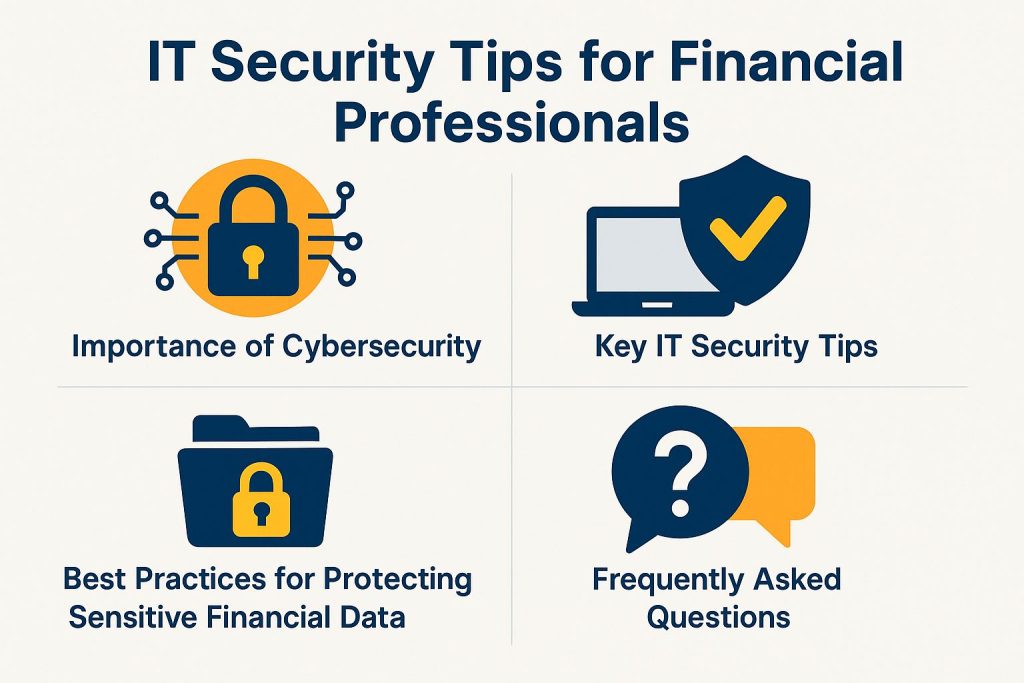Tips to Optimize Your Business Network for Speed & Security

Today, a business network’s efficiency depends on speed, performance, and security. Slow or insecure networks can disrupt operations. This leads to lost revenue, data issues, and connection problems. This article looks at key factors affecting network performance and security. It highlights common threats and practical strategies to improve them.
It provides best practices and tips for ongoing improvement. This helps enhance the network, making it secure and efficient while meeting industry standards.
Understanding the Importance of Network Speed, Security, and Performance Optimization for Businesses

Today, understanding network speed, security, and data protection is essential for business efficiency and protecting sensitive information.
As businesses rely more on cloud services, ensuring data security while improving speed is crucial for IT management. For those interested in how IT services can bolster these efforts, you can explore our detailed insights in Managed IT Services for Asheville Businesses.
Slow or insecure networks can lower productivity, increase data breach risks, and harm business operations.
Therefore, businesses must prioritize network efficiency and resilience in their digital strategies.
The Impact of Slow or Insecure Networks on Business Operations and IT Infrastructure
Slow or insecure networks can harm business operations. They reduce productivity, cause inefficiencies, and increase cyber threats.
Frequent disruptions in accessing key applications frustrate employees. This affects their morale and motivation.
Reports show that companies can lose up to 30% productivity on days with network issues. If customer service cannot quickly access important information, it leads to longer wait times and unhappy customers.
Research shows 78% of consumers abandon transactions due to poor service. This highlights the need for businesses to invest in strong network and security measures. Such investments are vital for ensuring smooth operations and enhancing overall customer experiences.
Optimizing Network Speed, Network Topology, and Scalability for Your Business
To stay competitive, businesses must regularly improve network speed. They should use a multi-faceted approach that addresses factors affecting performance.
Good optimization strategies enhance bandwidth use, reduce latency, and improve network layout. This ensures smooth operations and a better user experience.
Whether through hardware upgrades, configuration changes, or cloud services, optimizing speed is vital for operational excellence in today’s connected world.
Factors Affecting Network Speed, Bandwidth Allocation, and How to Address Them

Many factors can hurt network speed, such as latency, low bandwidth, and poor configuration.
These issues slow data transmission. This causes frustrating delays in online activities and affects application performance.
For example, network latency is the time it takes for data to travel between devices. Low bandwidth limits how much data can be sent at once, which bottlenecks performance. Poor network configurations add unnecessary complexity. This slows connections and causes frequent interruptions.
Users can fix issues by using network troubleshooting tools and incident response strategies. Maintaining proper network documentation helps understand the network layout and performance, and implementing redundancy techniques can enhance reliability, ensuring that connections remain stable even under adverse conditions.
Ensuring Network Security, Endpoint Security, and Risk Management for Your Business
Ensuring network security for businesses is essential in protecting sensitive information and maintaining data integrity against the continuously evolving landscape of cyber threats.
The implementation of comprehensive cybersecurity measures, including firewall protection, encryption protocols, and access control, serves as a fundamental aspect of safeguarding a business’s network.
As organizations increasingly depend on digital networks and remote access, placing emphasis on robust network security practices becomes vital for mitigating risks and ensuring compliance with industry regulations.
Integrating threat detection systems and doing regular network assessments helps manage vulnerabilities and enhance their overall cybersecurity posture. For a deeper understanding of how managed security services can protect digital assets, learn more about the benefits of these services as a strategic component in network security.
Common Security Threats, Threat Mitigation, and How to Protect Against Them
Businesses encounter a variety of common security threats, including data breaches, ransomware attacks, phishing scams, and packet loss, which necessitate proactive protection measures.
These threats can disrupt operations and cause financial losses, and tarnish an organization’s reputation. To effectively combat these risks, companies should consider implementing comprehensive vulnerability management programs that identify and mitigate weaknesses before they can be exploited.
Moreover, regular penetration testing simulates attacks to find vulnerabilities. Establishing robust network policies can help safeguard sensitive data, while user training programs enhance employee awareness regarding the identification and response to security threats, ultimately fostering a culture of cybersecurity across the organization.
Best Practices for Maintaining a Fast, Secure, and Resilient Business Network

To keep a fast and secure business network, use best practices for performance and security. This approach aligns with the principles outlined in our analysis of how managed security services protect digital assets.
Tips and Strategies for Continuous Improvement and Network Administration
Businesses should regularly assess their systems for continuous improvement in network performance and security.
This process enhances efficiency and empowers employees to make informed decisions about their tasks.
Organizations should set performance benchmarks to measure progress effectively. Regularly revisiting these benchmarks facilitates the identification of potential weaknesses and corresponding opportunities for growth. Additionally, integrating user training sessions equips staff with essential skills to better understand network protocols and security measures.
Using network analytics helps organizations find vulnerabilities and improve operations, as it enables them to pinpoint vulnerabilities, streamline operations, and ensure that their policies and configurations remain effective in fortifying against emerging cyber threats. This ongoing evaluation allows businesses to adapt strategies swiftly to the ever-evolving landscape of cybersecurity.
Frequently Asked Questions on Network Performance, Security, and Optimization Techniques
What are some tips to optimize my business network for speed?
1. Update network equipment and software regularly for better performance.
2. Use Quality of Service (QoS) to prioritize important network traffic.
3. Use VPNs to reduce latency for remote workers.
4. Monitor the network for bandwidth or connectivity issues and fix them quickly.
How can I improve the security of my business network?
1. Use strong encryption to protect sensitive data and communications.
2. Use firewalls and intrusion detection systems to block unauthorized access.
3. Create user accounts with unique login credentials. Limit access to necessary network resources.
4. Regularly update software and systems to fix security vulnerabilities.
What are some ways to optimize my wireless network for speed and security?
1. Position wireless access points for maximum coverage and less interference.
2. Use strong encryption and authentication for wireless connections to protect data.
3. Check for wireless network congestion and fix interference issues regularly.
4. Keep guest and employee wireless networks separate to reduce security risks.
How can I protect my business network from cyber attacks?
1. Train employees on cybersecurity best practices. Teach them to avoid suspicious emails and links.
2. Create a strong password policy. Update passwords regularly.
3. Conduct regular vulnerability assessments and audits to find and fix weaknesses.
4. Consider a managed security service provider to monitor and protect your network 24/7.
What should I do to optimize my network for remote workers?
1. Use secure remote access tools like VPNs to protect data and communications.
2. Use multi-factor authentication to block unauthorized network access.
3. Train remote workers to troubleshoot common network issues with available resources.
4. Monitor and update remote devices regularly to fix security vulnerabilities.
How can I ensure my network is running at peak performance?
1. Conduct regular network speed tests and analyze user behavior to find bottlenecks or slow connections.
2. Use real-time monitoring tools to track performance metrics. Address issues promptly.
3. Use load balancing techniques to distribute network traffic evenly and optimize performance.
4. Consider upgrading bandwidth, implementing network upgrades, or adding resources to meet increasing demands.
5. Regularly apply software updates to ensure security and compliance with IT policies.
6. Use network segmentation strategies to enhance cybersecurity and improve automation.
7. Implement IT governance and risk assessment to ensure business continuity and compliance.
8. Establish service level agreements and management policies to support disaster recovery.
9. Enhance wireless and physical security to protect IT infrastructure.
10. Use VPN and remote management tools to maintain networking and optimize services.




